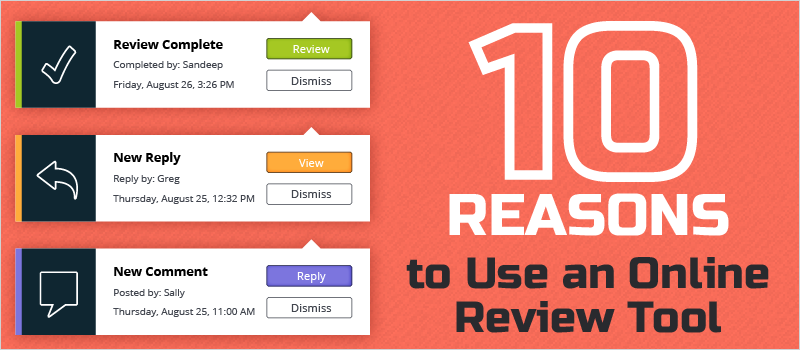
If you are still using spreadsheets to collect feedback from stakeholders, there is a better way. Over the last few years, services have sprung up to help you create better courses by simplifying the process of collecting feedback from team members, clients, SMEs, and others. Some of the most popular are: ReviewLink, ReviewMyElearning.com, OQAR, and CourseInspector.
Here are ten reasons why you should try out an online review tool:
-
- Ease of use: These tools eliminate the need to send complex instructions, links, forms, and feedback templates. Depending on your preference, Reviewers won’t even have to log in. They get a link and start reviewing. All the feedback is collected in one format; no more word docs, spreadsheets, etc. The majority of them do not require you to alter your course in any way; just publish for SCORM as you would normally. They will automatically detect slide changes and get the current slide’s information. Which leads me to reason number two…
- Communicate effortlessly: Ever have a comment that starts like this “I think it’s the third Introduction slide… the one with the picture of that lady.”? These tools keep track of the current slide title and number. They automatically attach that information to the comments which will make it a lot easier for everyone! Additionally, you can clarify any comments within the tool itself and the whole team can chime in. So when someone requests that you change the font color to blue you can reply back and ask, “Dark or light blue?” Then, the whole team can discuss the merits for various shades of blue.
- Impress your Stakeholders: Our industry is growing rapidly and it seems there are new development shops opening every day. Using a modern, cloud solution will help you stand apart from the competition. I have seen many proposal pitches that touted the firm's solution for review cycles. Reviewers love that they don’t have to keep notes in one window while viewing the course in another.
- Notifications: Wouldn’t it be nice to know when new comments were added? Or when the developer replies to your question? Or when a Reviewer is done? Most of these tools will shoot you some emails to let you know. And they can notify you when a review is complete.
- Reduce Duplicates: You just posted a course on your FTP site and sent a link to 20 reviewers. Three minutes later you get the first email: “Remarkable is misspelled on Slide 3.” Two minutes later and another email: “Hey, romarkable job on slide three!” It has started. Over the next day you can expect 18 more comments about that typo.
But not if you use a tool like one of these. All the Reviewers can see each other's comments (if enabled). So after the first comment is made about the typo, everyone can see that you are aware of it and there is no need to mention it again. - Efficient: Tired of trying to compile all those comments into one document? Would it be useful to filter the comments by status or category? With cloud-based solutions all the comments will be collated. They will present them in a user-friendly format that you can filter and sort to your heart’s content. From there you can update their status, assign them to developers, reply to them, and more. Plus you can view the comments alongside the course as you navigate through it. And with some tools you can jump right to the slide the comment was made on without having to navigate through the whole course.
- Security: Dropping multiple versions of your course on a web server isn’t very secure. Many search engine bots will index any page they can find. Which means your course might show in a Google search. And once you share the link with a few people there is no telling where it might end up. With a cloud based tool you can (optionally) require users to login to see the content. And even if you are using a public invite (which several tools offer) the content is securely behind a layer of protection to keep out strangers and search bots. Some services offer even higher levels of security; disguising the contents true location and verifying authorization for each file in your course before delivering it to the browser.
- Audit trail: These tools offer features that will track the history of each comment. This is great for post-project analyses. You can see which reviewers submitted the most comments. Which categories received the most comments. How long it took to resolve issues. Also if there is ever of a question about a request or reply you can go back and take a look at the history.
- Link Expirations: With most of these tools you can add an expiration date to your Review Cycle. This is great to avoid those after deadline comments. And we have found that when a Reviewer knows they will locked out of the course at a certain date they are more responsive and tend to complete their reviews faster.
- Affordable: You might think that it will cost a lot for all these features and conveniences, it doesn't. And really they pay for themselves in with the time they save. Costs and plans vary a lot from one service to the next. Not all of them list their pricing on their web site. But some have plans for as low as $15 a month.







